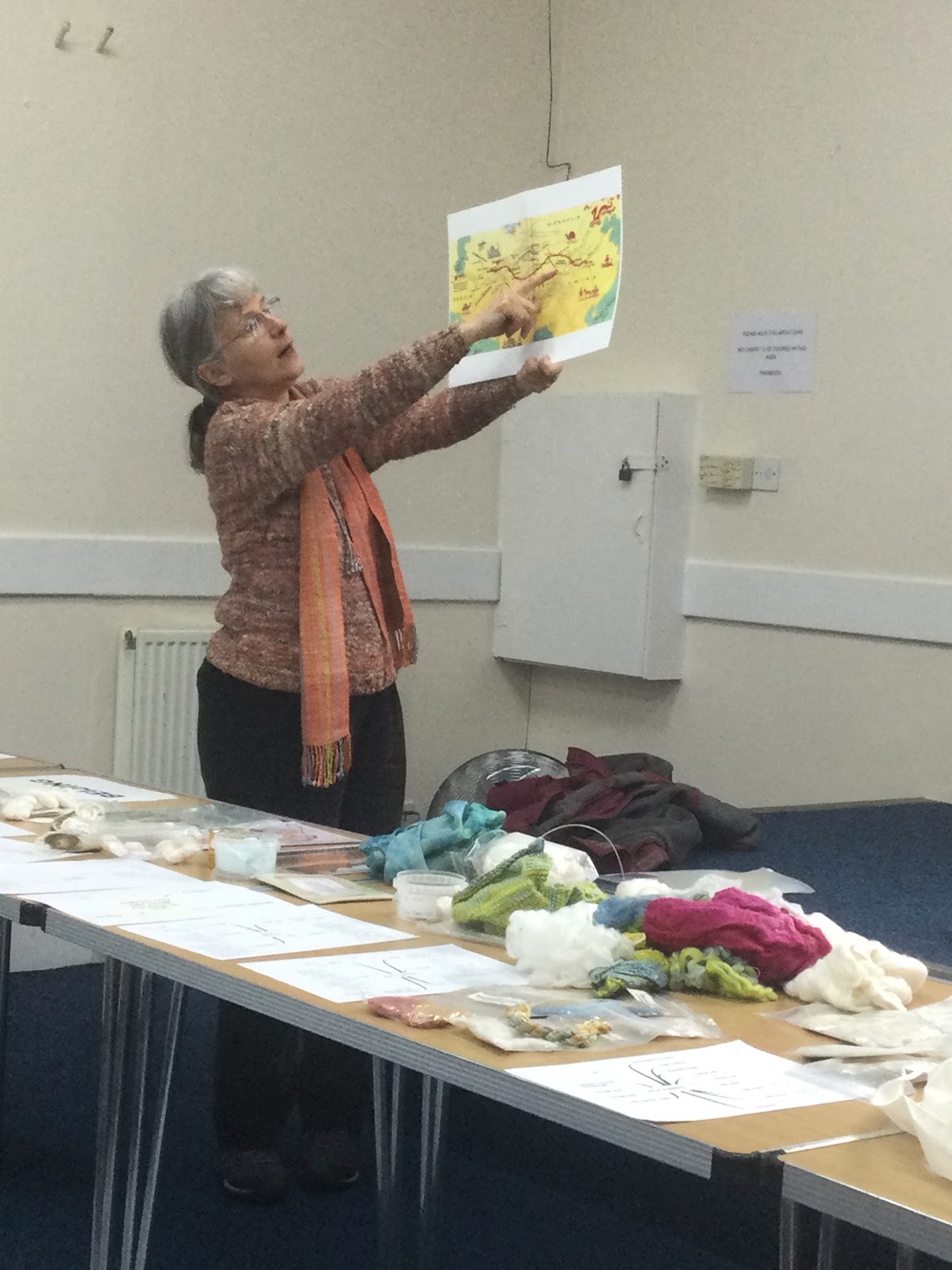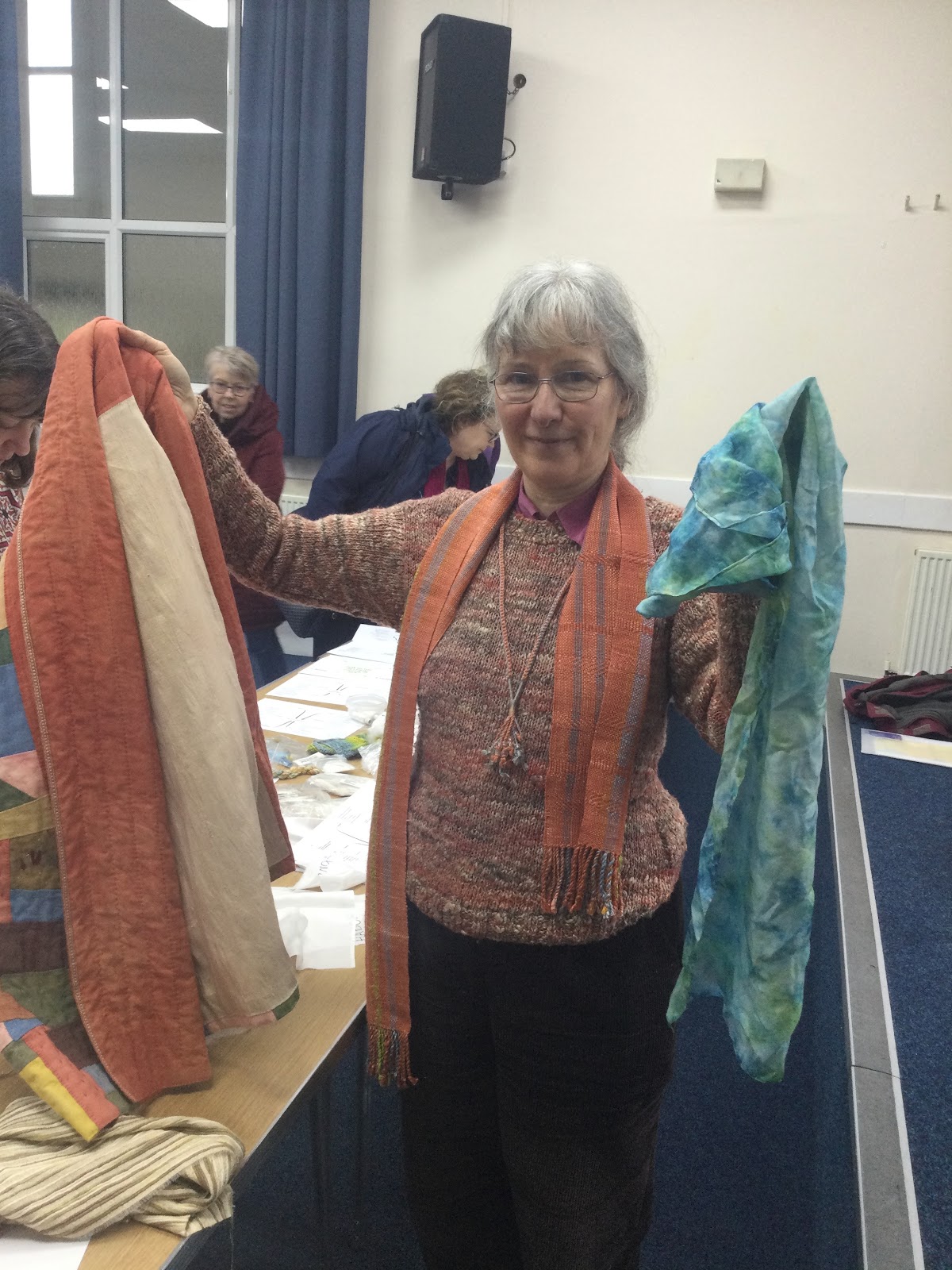Teresinha Roberts - Silk Road to Birmingham
Teresinha gave us a fascinating insight into the world of silk and her journal with this beautiful material. Teresinha told us a little about her own life from Brazil, via Malawi to the UK and how caterpillars have played a big part in her life.
She now has Mulberry trees on her allotment to produce her own silk and explained how silk is very different from other fibres, in that it has long fibres which allows the drape in silk garments. It is a very tough material in spite of its delicate appearance and has been used for fishing nets, medical procedures as it is non-allergic, as well as the cross hairs on microscopes!
Silk is extruded not grown, unlike other fibres has no cellular structure which is why is is has long fibres and the reason it is shiny is because of its prism type shape, which reflects the light.
The oldest piece of silk that we know of is 5,500 years old, which is staggering and it is thought to have been a baby's cloth.
There are different types of silk, depending on whether the silk is reeled or spun and there are 100+ types of silk worm, such as Tussah and these are bigger than Mulberry worms and feed on Oak leaves.
Teresinha has a lovely way of speaking and has other talks on Wild Fibres and I am sure we will be inviting her back very soon. Her website is www.Wildfibres.co.uk






No comments:
Post a Comment